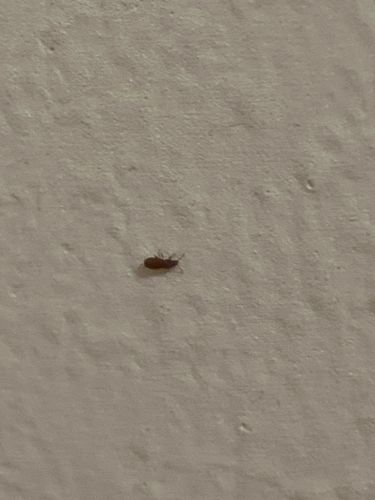Booklouse (Psocid)
Scientific Name: Various species within the order Psocoptera, common genera include Liposcelis and Trogium
Order & Family: Order: Psocoptera, Family: Liposcelididae (or various other psocid families)
Size: Typically 1-2 mm, though some species can be up to 10 mm

Natural Habitat
Damp, dark, and undisturbed places such as under wallpaper, in books, food storage areas, attics, crawl spaces, and areas with high humidity (e.g., bathrooms, kitchens). They feed on microscopic mold and fungi that grow in these conditions.
Diet & Feeding
Microscopic mold, mildew, fungi, starch, glue in book bindings, plant, and insect fragments. They do not bite humans or pets.
Behavior Patterns
Nocturnal and shy, they avoid light. They are often found in large numbers when conditions (humidity and food sources) are suitable. They are wingless or have vestigial wings in many indoor species. Their presence often indicates a humidity problem.
Risks & Benefits
Potential risks: Can cause damage to books, paper products, and stored foods (like grains, cereals) by feeding on the molds and starches. They do not transmit diseases or bite, but high populations can be a nuisance and indicate a moisture problem in a structure. Benefits: None significant to humans, but in natural environments, they contribute to decomposition processes by feeding on fungi and detritus.
Identified on: 9/23/2025